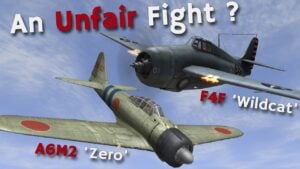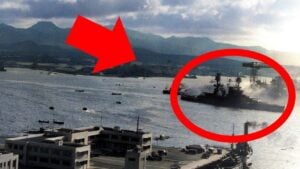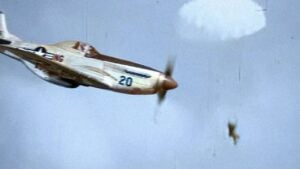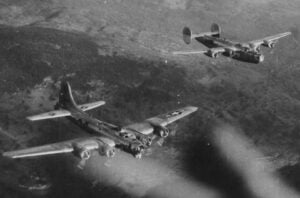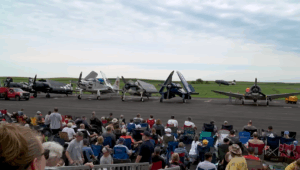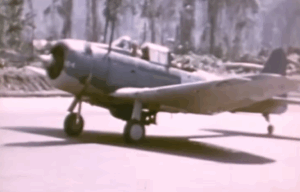Watch Rare WWII Newsreel Footage During The Battle of Iwo Jima

PennLive.com / YouTube
Rare color newsreel captures fresh scenes from the Battle of Iwo Jima, offering a vivid window into fierce fights on volcanic ash beaches and Mount Suribachi’s slopes. These wartime images bring forward moments unseen in many history books, letting viewers witness strategy, grit, and emotion from a human point of view.
Naval Raids and Island Defense
The film shows U.S. carrier groups pressing close to Japan’s home islands in early 1945, launching daring air raids to disable Tokyo’s industries and soften defenses before the invasion began. Fighter planes from Task Force 58 raced through storms toward their objectives, racing to disrupt supply lines linked to bases in Borneo, Singapore, and beyond.
On 19 February, Marines hit Iwo Jima’s shores under cover of naval fire and bombing, despite facing dense tunnel networks, bunkers, and cave positions designed to wear down attackers.
Eyewitness Footage of the Assault
Newsreel frames show Marines using amphibious vehicles amid black volcanic sand and storm-like resistance. Nearly eight miles (11 km) of tunnels had been dug across Suribachi’s slopes, adding a hidden layer to Japanese defense. The visual quality and angle of the footage put the viewer close to the struggle, as armored vehicles advanced and infantry pressed forward under enemy fire.
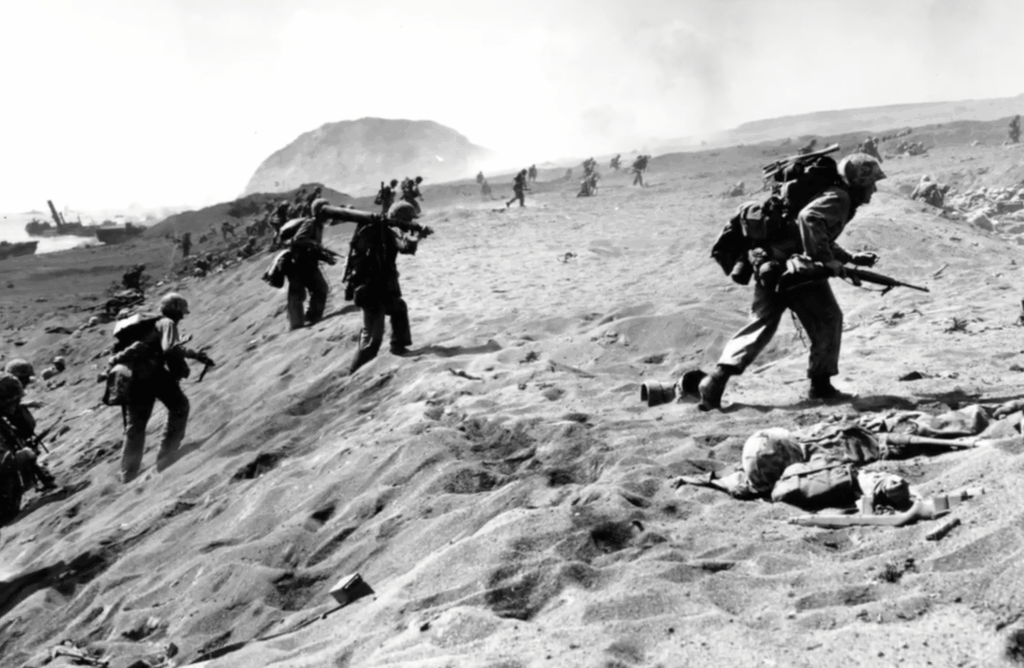
Human Cost and Combat Scope
The 36-day battle caused intense losses among U.S. forces—more than 6,800 killed and around 19,200 wounded—totaling over 26,000 casualties. Japanese defenders numbered around 21,000; over 19,000 were killed, and only about 1,083 were captured
The newsreel also captures personal moments: marines advancing through volcanic ash with alligators (amphibious vehicles) leading the front; perilous canyon crawls under heavy fire; and scenes that hint at both determination and cost.
Visual Storytelling of Battle
Contrasting images of naval planes bombing overhead with scenes of men digging in on the ground show strategy played out in stages—from air cover to ground breakthrough. The footage bridges long-distance campaigns to first-hand experiences, making the historical record personal. Through battered steel, clouded skies, and gritty ash, viewers sense the timing, noise, and tension of a fight that shaped Pacific history—captured not through words, but through what the camera saw and men lived.
Keep going for the video below:
















